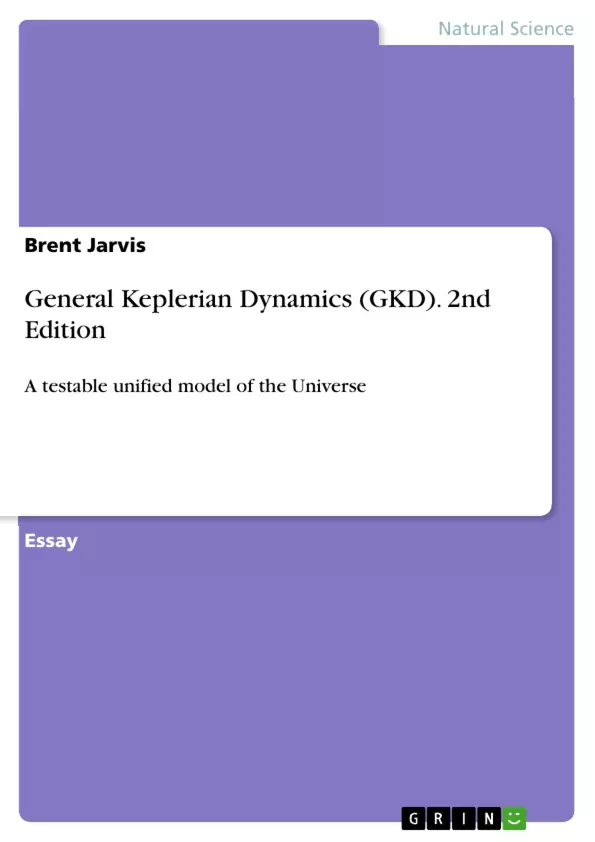Newton generalized Kepler's laws of planetary motion when he developed his laws of universal gravitation. Modifications to Newton's generalizations are submitted which offer a novel solution for the galaxy rotation problem and a unified model of the Universe. Observable evidence and experimental predictions are also submitted which can prove the unified model.
Inhaltsverzeichnis (Table of Contents)
- Introduction
- A Generalized 1st Law of Planetary Motion (GKD1)
- A Generalized 2nd Law of Planetary Motion (GKD2)
- GKD2(a)
- GKD2(b)
- GKD2(c)
- GKD2(d)
Zielsetzung und Themenschwerpunkte (Objectives and Key Themes)
This paper presents a novel unified model of the Universe, known as the Lorentz-Mandelbrot Fractal Electrodynamic Astronomical Model (FLAME), which provides a solution for the galaxy rotation problem. The paper outlines the fundamentals of General Keplerian Dynamics (GKD) and offers experimental predictions to prove or disprove the FLAME model.
- Scale dependency of angular momentum and time
- Generalization of Kepler's laws of planetary motion
- Introduction of a toroidal reference frame to describe orbital trajectories
- The role of polar frequency in determining orbital paths
- Experimental predictions to test the FLAME model
Zusammenfassung der Kapitel (Chapter Summaries)
The paper begins by introducing the FLAME model and its implications for understanding the Universe. It discusses the scale dependency of angular momentum and time, leading to a unified model that encompasses both general relativity and quantum mechanics.
The paper then presents a generalized first law of planetary motion (GKD1) that incorporates a non-inertial toroidal reference frame within an inertial Cartesian coordinate system. This framework allows for a more comprehensive description of a secondary's geodesic path.
The paper then explores the generalized second law of planetary motion (GKD2), focusing on the three primary axes of rotation (major, minor, and torque) of a secondary's orbit. It defines the relationship between these axes and their respective radii, and introduces the concept of polar frequency.
Schlüsselwörter (Keywords)
General Keplerian Dynamics, Lorentz-Mandelbrot Fractal Electrodynamic Astronomical Model (FLAME), galaxy rotation problem, unified model of the Universe, scale dependency, angular momentum, time, toroidal reference frame, orbital trajectories, polar frequency, experimental predictions, quantum entanglement, dark energy, dark matter.
- Quote paper
- Brent Jarvis (Author), 2014, General Keplerian Dynamics (GKD). 2nd Edition, Munich, GRIN Verlag, https://www.grin.com/document/271676



